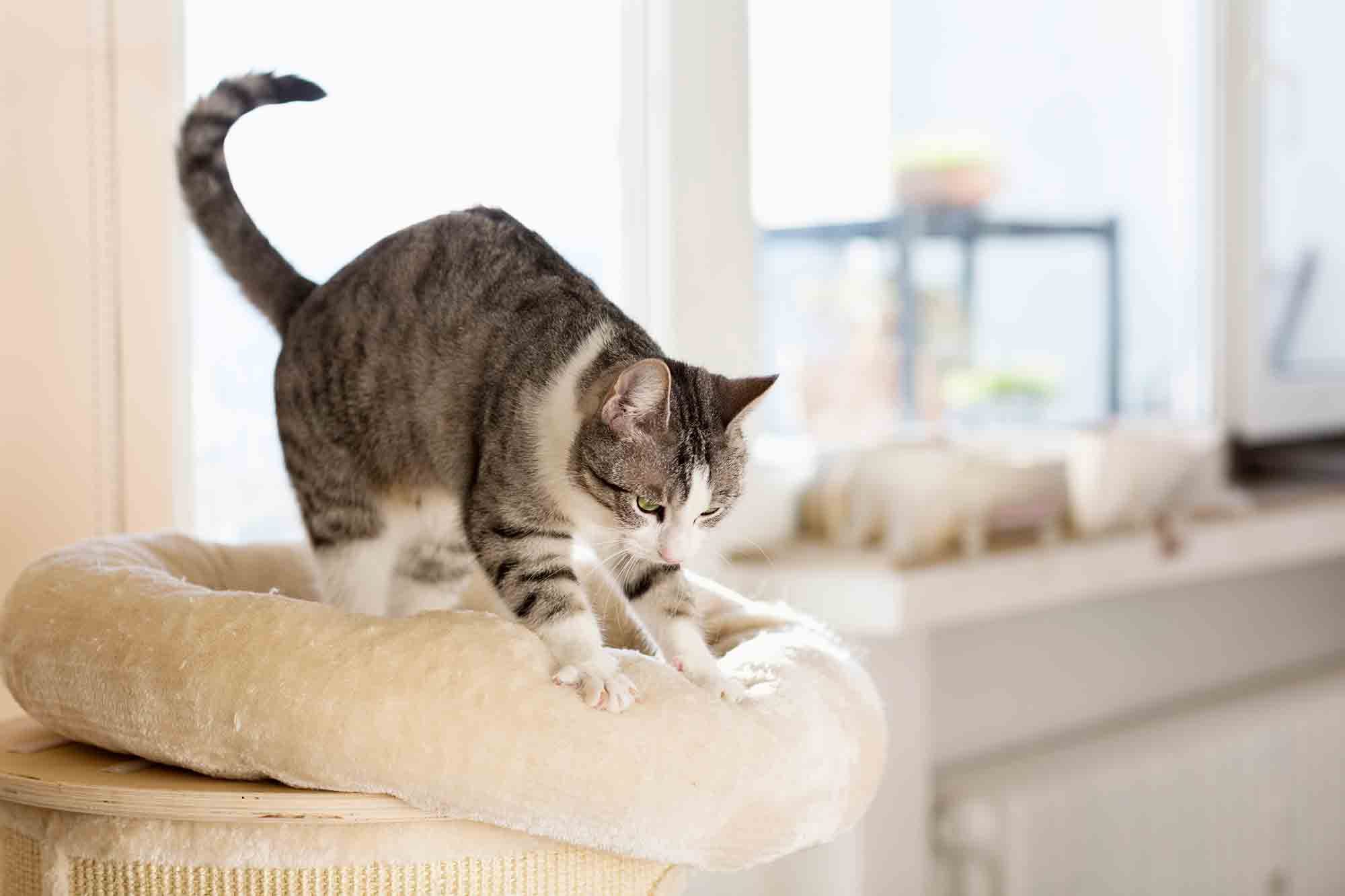FAQS On Hedgehog Care From A New Albany, IN Veterinarian
February holds its own unique associations, just like every other month. Valentine’s Day and the long-running Groundhog Day tradition are definitely the most well-known. We’re also celebrating carrot cake, tater tots, chopsticks, lame ducks, and creating vacuums this month, but we’ll leave those topics to others. Back to Groundhog Day, which is also Hedgehog Day. In fact, it was Hedgie’s day first. Ancient Romans used to observe hedgehogs in the moonlight, and went by whether or not the hedgehog spotted its shadow to predict weather patterns. While Phil may have taken over as the more popular predictor, Hedgie hasn’t been left behind – he’s now a beloved pet! Keep reading as a New Albany, IN veterinarian offers important tips on caring for these adorable creatures.
Where Are Hedgehogs From?
Wild hedgehogs live in woodlands, parks, and hedgerows. There are 14 types of hedgehogs in the world. Only two varieties are commonly kept as pets: European hedgehogs and African pygmy hedgehogs. The African pygmy hedgehog is the most popular here in America. This isn’t surprising. Hedgehogs are not only super cute, but they are also pretty easy keepers.
There are some factors to keep in mind before adopting Hedgie, though. These guys may not be a good fit for families with dogs that have a strong prey drive. And while they make good companions for older children, toddlers can startle them or even harm them by accident. Consult your New Albany, IN veterinarian and do plenty of research before adding one to your family.
How To Feed Your Pet Hedgehog
Wild hedgehogs live on insects, so Hedgie’s digestive system is best suited for a high-protein, low-fat diet.
Hedgehog kibble is a good choice as a main meal. You can also offer high-quality cat or dog food that is high in protein. Salmon, chicken, turkey, and eggs are also suitable options. Hedgie can also eat certain fruits and veggies, such as bananas, papaya, beans, corn, peas, apples, carrots, watermelon (without skin and seeds), pears, cherries, blueberries, strawberries, blackberries, and raspberries can be enjoyed by your pet. Remove any skins or pits before feeding them to your tiny friend.
You can give Hedgie gut-loaded insects once or twice a week. These are treats, but also will round out his diet. Some good options include earthworms, waxworms, silkworms, or crickets. Get store-bought varieties, since wild insects can carry parasites and diseases.
Don’t feed your tiny pal the following foods:
- Avocado
- Nuts
- Hard/Raw Vegetables
- Raw Meats
- Raisins
- Grapes
- Bread
- Seeds
- Milk
- Peanuts
- Tomatoes
- Honey
- Junk Food
- Chocolate
- Alcohol
- Dried Fruit
- Vegetables
- Garlic
- Onion
Do your research before offering your pet anything new. Also, be sure to ask your veterinarian for more specific advice.
How Should A Hedgehog Be Housed?
A hedgehog cage should at least be 4 x 2, at a minimum. Choose a cage with a solid bottom. Mesh floors won’t contain bedding, and they can even hurt your pet’s tiny feet.
For bedding, you can use paper, kiln-dried shavings, or a soft blanket, such as a fleece blanket. If you want to add a litter box, Use paper towels or soft pellets as litter. Avoid clay and clumping litters, as these can pose a risk of intestinal blockage. You should also avoid pine and cedar products as they can cause respiratory problems.
Just like people, hedgehogs need proper activity to stay healthy. you’ll need to get Hedgie an exercise wheel. Pick a solid wheel: wire ones are not safe for your pint-sized pal to run on.
Your hedgehog will also need a place to hide or rest. You can use pouches, igloos, or habitats meant for reptiles.
Stimulation and enrichment are also important. You’ll need to offer plenty of toys. Many of the toys made for cats and small dogs will work nicely. Look for brightly colored ones, so your pet can see them.
Contact your veterinarian for specific cage setup tips.
Placement Of Hedgehog Cages
That old adage of location, location, location definitely applies here. Hedgie needs to be in a room that always stays between 70 and 80 degrees. Avoid direct sunlight and drafty areas. Loud noises may scare the little guy, so keep him away from speakers and your teenager’s drum set.
If you have a dog or a cat, set the hedgehog habitat on something, so Fido and Fluffy can’t stare in at him. Just make sure Hedgie can’t fall out.
One last thing to consider: Hedgehogs are night owls. It’s probably best to put your pet’s house somewhere he can sleep during the day and run and play at night without waking you.
How Do I Make My Hedgehog Feel Safe?
Your new pet may take some time to warm up to you. This is normal for hedgehogs. Don’t force things! You’ll need to earn the hedgehog’s trust.
Put an old t-shirt in your pet’s cage so he can snuggle up in it. This can help him form positive associations with you. He will get used to your scent, and hopefully begin to associate it with feeling comfortable and safe. Try not to change soap, lotion, detergent, or scents during this time.
Be careful not to scare your hedgehog. Hedgies are very timid, and are easily frightened. They’re also wired to run rather than fight, so when Hedgie gets scared, he may roll up into a ball. Do not force him to unroll. Just let him be until he feels comfortable. Friendly hedgehogs may not take long to uncurl themselves. They may even start waving their tiny hands, which is of course beyond adorable.
Because hedgehogs do not have good eyesight, they rely on their noses rather than their eyes to see things. Keep in mind that shadows are very scary to them. Also, never pick up your quilled pet from behind or while he is sleeping, as that can be very frightening for him. (You probably wouldn’t like it if a giant swooped you up mid-nap either.)
Is It Possible For Hedgehogs To Shoot Their Quills?
Hedgehogs, like porcupines, sport quills. These quills are made from keratin, the same substance that makes human hair and nails. (Interesting tidbit: keratin is also the building block for snakes’ scales.) Though Hedgie’s quills are adorable, their primary purpose is to protect him from danger. When faced with danger, hedgehogs will curl into a protective ball. Although your pet may lose quills naturally, he cannot shoot them out as a defense mechanism.
What Health Problems Do Hedgehogs Have?
Hedgehogs are susceptible to several illnesses and diseases, including cancer, reproductive problems, and dental trouble. You’ll need to watch out for warning signs that something is wrong. Some of these include loss of appetite, weight loss, respiratory problems, dull eyes, lethargy, diarrhea, and lumps or bumps. You may also notice uncharacteristic crankiness, such as constant hissing or grumbling. If you observe any of these things, call your veterinarian immediately.
In Conclusion: The hedgehog has become quite popular as a pet in recent years, and with good reason. Just make sure you do your research before investing in one, and ask your New Albany, IN veterinarian if you have any questions.
If you have any questions about caring for your pet hedgehog, please contact your local New Albany, IN pet hospital.



